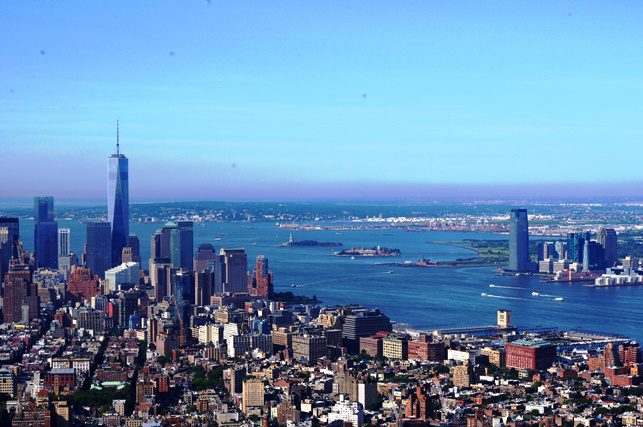
Travel, especially air travel, can be so disorienting. Just when I had almost recovered from an acute case of culture shock after flying from Sicily to Switzerland, a few days later we hopped on a plane again in Milan and—voilá! We found ourselves in…”Little Italy,” New York City’s version of the Old Country. My brain wasn’t prepared for so much confusion, especially being the sleep-deprived father of a precocious little principessa. (I wonder if culture shock has ever been fatal?)
This was not the first time that I’ve experienced reverse culture shock upon my re-entry into American society—and yet I’m still always caught off guard when my own culture “shocks” me. But that’s exactly what happens, and it’s a very enlightening phenomenon when you’re able to take an objective look at your own cultural reference points after being detached from them for a long period.
Case in point. We were standing at the curb in Manhattan, waiting for a bus somewhere near City Hall Park with a dozen or so New Yorkers (I assume they were locals, anyway). I was a little anxious, because I didn’t know the bus routes and wasn’t too sure if I could buy a ticket on board. It was hot, my baby was cranky, and the last thing I wanted was to get on the wrong bus and wind up in Queens or Brooklyn or god forbid, New Jersey. We were tired of walking, we were hungry, and we wanted to go up to Little Italy for lunch. (Yes, that’s a whole other discussion; we had just flown in from “Big” Italy, so why were we keen to encounter the American version?)
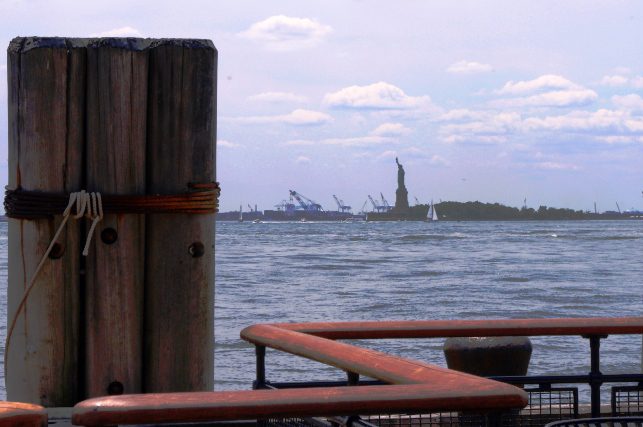
A few minutes later the bus pulls up and parks, but the doors don’t open right away. None of the New Yorkers seemed bothered by this, which I found a bit unsettling. In Rome, the people would be banging on the doors and calling the driver’s wife and/or mother all sorts of colorful nicknames within about 4 seconds.
So now the driver pushes a button and gets up from his seat. The door opens, and he slowly walks towards us while a steel platform begins to emerge from the undercarriage. All the while the locals are still just standing there patiently, and I’m looking around for the Candid Camera. That’s when I spot a woman in wheelchair, which I hadn’t seen due to my own petty concerns. But I was oblivious, pushing my way past everyone, including the woman in the wheelchair, to get onto the bus with my baby. My wife immediately noticed the odd looks coming my way, but it took me a few more minutes to figure out what was going on.
So exactly what was going on then? Well, it seems that in New York, other passengers are not allowed to board a bus until the wheelchair passenger has been secured into place by the driver. The amazing thing about this rule is that people actually obey it without protest.
I started to think about how back in Rome I always complaining about the cafoni who cut in line and push their way onto buses that are already stuffed beyond their capacity. I can’t count the times that I’ve said swear words under my breath pointed in their general direction. What an awkward surprise when I realized that in the U.S., I was now the cafone. Really? Had I been so conditioned by all of my time living in Rome? Or is it just human nature to adapt to the culture that surrounds you?
Which brings me back to Little Italy.
The Old World meets The New World on Mulberry Street
Eventually we worked out the bus route, I got over my self-loathing, and we found ourselves on Mulberry Street, which is about all that’s left of Little Italy. These three blocks of nostalgia are frozen in time, calling to mind images of my great-grandfather who must have passed through here at some point. (My ancestor, Giovanni Zullo, quickly moved on to Chicago, but the ship’s manifest said that he was meeting some cousins in New York first—probably to drop off some salami and prosciutto.)
Although visually evocative, in reality this small strip of Italian-American history is little more than a continuous string of identical “Italian” restaurants, broken up by the occasional discount bodega selling cheap Chinese products. We spotted a place called “Caffé Palermo,” which had a loud sign outside claiming, and I quote, “The Best Cannolis on Planet Earth!” Upon spotting this declaration, an incredulous look appeared on the face of my Sicilian wife, who was at once intrigued and appalled by the impudence of this restaurant’s proprietor. So of course we sat down at a table to investigate.
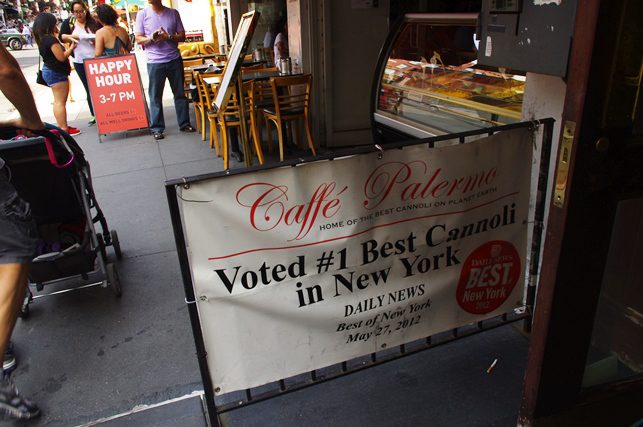
Jessica immediately got up to survey the pastry case, while I attempted to distract our little bambina. Then one of the old guys from the neighborhood wandered over to my table to strike up a conversation. At first it was the usual banter: where are you from, what do you do? He told me that he grew up in the neighborhood and lived there his whole life, recounting its history as well as the recent uncomfortable changes.
“In da old days, dey were all Italians, ya see, but each block had its own identity. Mulberry Street here were da Sicilians, Mott were da Calabresi, and over on Baxter were da Napolitani. And if you was Sicilian, your mamma better not catch with a girl from Mott Street…and vice versa. Dat’s how it was back den, capish?”
Yeah, I “capished.” His story pretty much squared with what I heard my grandparents say about the old Chicago neighborhoods.
“So it’s not like that anymore?” I asked.
“Naah. Everyting’s changin’. Hell, there’s more Chinese ‘round here than paisans these days.”
“Why’s that?”
He shrugged and puffed out a long sigh. “Dey got all da money. My brother-in-law was selling a building he owned last year…right there, just down da block. He wanted a million bucks for it, even though it was worth ‘bout a million and a half. None of da Italians ‘round here could afford it. A month later, a Chinese guy shows up and offers him two million. Cash. In a suitcase. What da hell’s he supposed to do?”
Just about then my wife comes back with a piece of New York cheesecake.
“That looks good,” I remarked, “but what happened to the best cannolo on the planet?”
“Cannolo?” she huffed, “I didn’t see any cannoli up there! There was a soggy pastry filled with frosting or something…how can they call that a cannolo?!? First, they didn’t even use real ricotta. Second, a cannolo must be filled only once it’s ordered, NOT two days before!”
I winced. I didn’t want offend our new friend standing four feet away. I need not have worried. My wife was speaking Italian, and as it turns out, our “Italian” friend didn’t understand a single word of the language. Yes, things in the old neighborhood have certainly changed. I said goodbye to him in Chinese and we were on our way.
The Great Melting Pot
Perhaps 100 years ago the Italians played the role of the unwelcomed Chinese, displacing the Irish, Germans, or other assimilated communities. I can imagine some Dutch-American in the summer of 1914 lamenting to his drinking buddies, “The neighborhood is really going to shit now that all these Italians are moving in!”
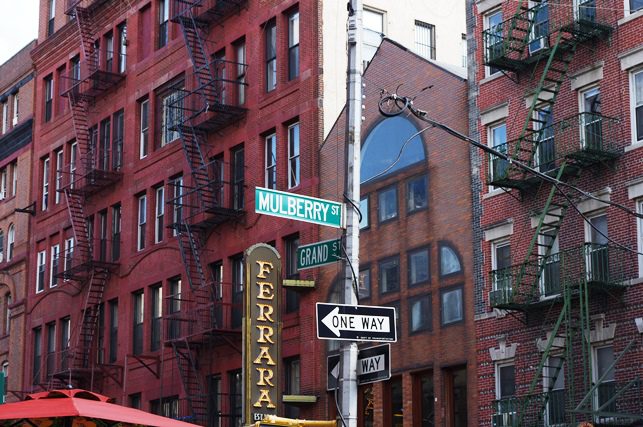
But it sure didn’t take long for the Italians to integrate. By the second generation, they were already speaking only English at home and firmly embracing America with both arms. My grandfather was born with the name Vincenzo, but somehow it became James and then Jimmy before he started attending the public school. What’s more, he excelled at baseball, a sport that his Old World father Giovanni probably never understood. He was a high school superstar, and was even offered try-outs by big league teams. Would’ve been a helluva shortstop for the White Sox, but his mother had passed away and The Great Depression was in full swing, so he gave up his baseball aspirations to go work his ass off in a factory to help support his 10 brothers and sisters. Those old school Italians were a tough bunch, and weren’t going to let anything stop them from realizing The American Dream.
Despite the changes, I still enjoyed my brief visit to Little Italy in New York. And on some level, I think that the original Italian immigrants that lived there three or four generations ago would have had a certain respect for the current Chinese “invaders” in their neighborhood. This country is all about opportunity. That’s all you’re promised, a fighting chance, but it’s a lot compared to most other places. So now the Chinese are sacrificing, living in difficult conditions, saving their money, teaching their kids English, and celebrating the possibilities of life in a free country. Good for them. And I’m sure their cannoli can’t be any worse than the ones at Caffé Palermo.
To appreciate what Little Italy once was really like, it’s worth a stop at the Italian American Museum on the corner of Mulberry and Grand (155 Mulberry Street). I passed through briefly, but would love to have spent more time there. They also have cultural events in the evenings, usually Thursdays; music, movies, festivals, etc., that celebrate the Italian-American experience. If you live in the New York metro area, or are planning a visit, check out their website for the full schedule of events.
Many cities around the U.S. still have areas with strong Italian-American roots. Besides New York and Chicago, there are great neighborhoods in Boston, San Francisco, and Philadelphia where some of the traditions are still (more or less) maintained. Even the place that I call “home” in Palm Beach County, Florida, there is a seasonal influx of Italian-Americans from up north every January through April. It’s a wish of mine to someday help bridge the sizeable gap between the current Italian-American community, and Italians living in Italy. Most Italian-Americans today do not have a realistic view of modern Italy, only having been exposed to the homesick stories about The Old Country told to them by relatives long since deceased. Which is too bad, because there is much to offer one another somewhere in between the similarities and the differences.
Then again, who knows? Many Italian-Americans might not wished to be associated with the rude cafoni pushing their way onto the bus, stepping over children and people in wheelchairs. And those are the ones just visiting New York, fresh off the plane from Milan. Yes, amici miei, that would be me…
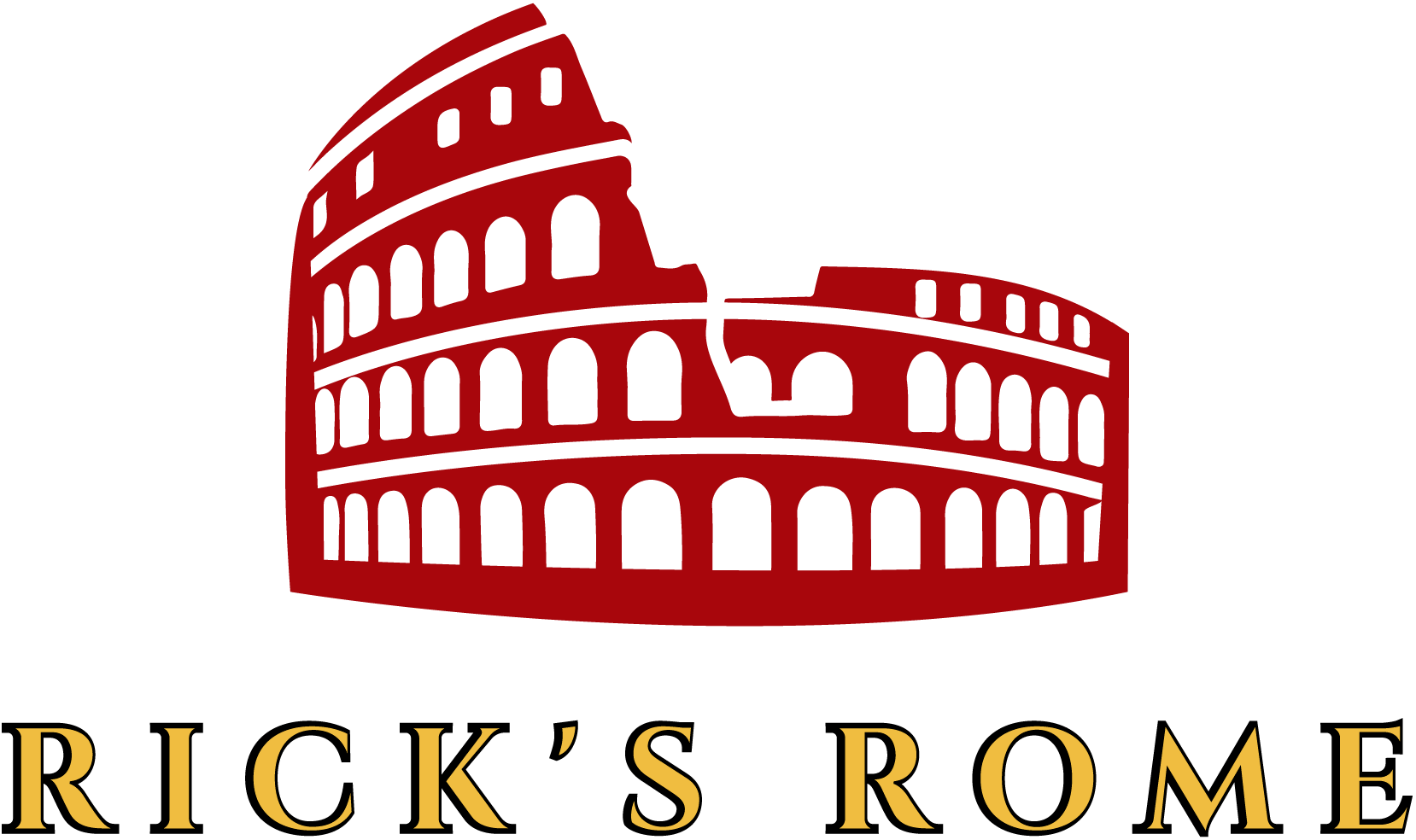
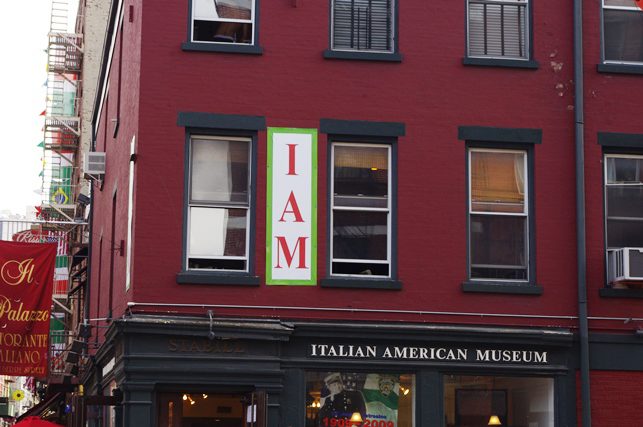
Yes unfortunately these are tourist destinations that real estate in the area is propping up faster than you can blink and fill up a suitcase full of cash up front (sounds like a good deal for NY standards) Nice post, enjoyed the back stories
Thanks Noel! See you in Italia!!
You should come check out Rhode Island.. we’re the largest population of italian Americans lol (given population being small… it may not be a lot but percentage wise its the most). Check out Federal Hill in Providence and Cranston.. they have some parades every year celebrating italian culture.
Well, I don’t make to those areas very often (actually, never), but if I do, I will definitely seek out the Italian-American neighborhoods. Thanks Joe!
Very interesting read – as an Italian-American who has lived most of my life in the UK, I have had the good fortune to travel a lot to Italy. I have long been aware that Italian-American is much more American than Italian but still a ‘club’ of its own!
In the new world, over time customs moved further and further from the original. One of the most basic examples is pasta sauce – in Italy it is a flavour for the pasta, in America there is more sauce than pasta, no?
Yes, a good way to explain, as you said, a “club” of its own. And the sauce provides as clear of an example as any! Brava Jenifer!
Hi Rick – Sorry I missed you on your sojourn to New Yawk, I would have liked to have bought you a Negroni as a token of my appreciation for your always entertaining blog. Although I am genetically an Italian, like most Italo-Americans I am culturally a product of the United States. Inspite of my successes in learning the language, becoming proficient in Italian history & culture, making annual pilgrimages to the old country and reclaiming my Italian citizenship (my father was born an Italian citizen in Boston in 1923), I am now and will always remain a stranieri. The main disconnect between Italians and Italo-Americans is not that the culture died with the previous generations; it lives on in the US but it is frozen 100 years in the past. Italo-Americans are the equivalent of the Amish when viewed by their Italian cousins, making it very difficult for the two groups to connect.
I guess that’s true to some extent. Their idea of Italian culture is frozen in the past…but I still think it’s uniquely Italian-American, as there were some immediate changes in the culture necessary for integration. But again, I always like to celebrate and enjoy both cultures…I just try to keep them as distinct as they truly are.
I have mixed feelings about the waning identity of the Italian American that you so insightfully exposed. As our American generations come to pass, our cultural identities become less and less relevant. It’s a sad thing–a thing which inspired me to learn the language and the culture a few years back after my mother died. (Her parents also stopped at Mott st after Ellis Island). She and her siblings never learned the language and would do anything to disguise their Italian heritage growing up in an Irish neighborhood in Philadelphia in the 1920s and 1930s. Her father had been disowned by his wealthy aristocratic father in Italy for having left the seminary. I am told the reason he didn’t settle in South Philadelphia with his fellow paesani was because he did not identify with the more “earthy,” more typical Italian immigrants. You can’t imagine the volume of psychological issues THAT left us with. I love my Italian heritage, but when I hear about the corruption, the nepotism, the difficulty getting a job unless you know someone, the mafia, the difficulty getting cable TV installed, etc, I’m glad I have an American passport as well as an Italian one.
I have mixed feelings, too, Paul. On the one hand, the reason the guy I met in NYC had lost so much of his cultural identity is because his grandparents did such an amazing job of getting their kids to integrate. Which I admire. Then again, yes, most of what was “Italian” in that first generation died with them. I think it’s great to be proud of our heritage, but we must recognize it as exactly that: our heritage, not our culture.
You’re right Rick. As much as I would like to consider myself genuinely Italian, and despite genuine Italian documents and sentiments, I’m not Italian; I’m American. Is that how you consider yourself–despite living in Italy and being married to a genuine Italian? (Sorry if you’ve already expressed the answer in another post).
No, it’s a fair question, Paul. And here’s my (slightly tongue-in-cheek) answer: Nothing will make an Italian-American feel 100% American as much as living in Italy for a couple years. You realize very quickly that the two cultures share very little in common these days. My wife reminds me of this every single day. 🙂
Great post Rick. There is a Little Italy in London but it’s extremely little. I do like to go to Bar Italia for a glass of prosecco, though. I love all the New York stories and can’t wait to visit there again.
Really? I never knew that there was a Little Italy in London. Will definitely check it out next visit!!
Rick, I remember on my first trip to Italy I did a cosmos tour. The tour director Maria Grazie (sp) said to us that we will notice things different in Italy and suggested that we do not compare things with home, they are not worse nor better they are just different. Best bit of travel advise I ever received. It has stayed with me through all my travels. One of the reasons we travel is to see different things hey. I was shocked the first time I took a bus in Rome but now I know what to expect.
Also, the world belongs to those who come last.
Thanks Lyn, you’re right. After all, if we didn’t want to experience something “different,” why leave home in the first place?!?
Haha, awesome read, Rick! Welcome back to the USA! Nice job being the cafoni on the bus, I sure can relate ;)…There are lots of things I miss about Europe, but I definitely like that things are more orderly in the States. And it literally took me a few months to fully get over culture shock here after 6 years living in Europe.
Loved this read about ‘Little Italy’ in NY and completely agree that those old Italian immigrants would respect the new Chinese immigrants. I’ve written a couple posts on Italian American communities since I’ve been back- in my childhood home of Buffalo, where my Italian American side lives and likes to complain about immigrants http://wanderlustmarriage.com/discovering-italian-roots-in-buffalo/
And I can imagine your wife’s frustration at these cannelloni’s! I wonder what she thinks of Bostonians cueing outside the door for them?! 🙂 http://wanderlustmarriage.com/italian-feasts-in-bostons-north-end/
Have an awesome time back in the States!! Please let us know if you’re coming to Boston. We’re away from August 29th-September 10th though. Ciao!
Hey buddy, go to hear from you!! And thanks for sharing the awesome links. It’s an interesting discussion, and plenty of room for diverse opinions. I like what you said about Italian “heritage” celebrations, and how Buffalo is still very much American. To me, it’s all good, as long as we acknowledge–and respect–the differences.
A more authentic Little Italy in NYC is on Arthur Avenue in the Bronx. Here there are more stores selling Italian and Italian American products than in Chinatown, and the businesses are still run by the same families who opened them. You can find the best cannolo (in New York City) at Madonia Brothers Bakery. It’s sweeter than its Sicilian counterpart but filled on spot which is important to me!
When visiting “Little Italys” in the US, I don’t compare them to Italy, but rather I’m reminded of the accomplishments of immigrants like my ancestors who migrated from Italy, worked hard to become successful in the US, and passed on their traditions to the next generation.
I’m glad you made it to NYC and hope you enjoyed my city!
I did enjoy it, Lauren, thanks. Next time I’ll go check out the Bronx. As far as the comparisons, I agree, they are two separate things. But for a person from Italy, it can be a little unsettling to see your culture altered beyond recognition, while still claiming to be “authentic.” I guess that’s where the confusion comes in…calling those things “Italian” when they should be called “Italian-American.” Both are great, but are not the same thing.
Very interesting post Rick, I too felt the same way when I visited little Italy a few years ago with my then-Italian boyfriend. On Mulberry street they seemed embarrassed that we spoke Italian and they didn’t. I just think that Italians in NY are less and less, plus they tend to be more integrated into society instead off sticking to one area like in the old days. For better Italian pastries, you need to go to Boston!
Yeah, good point, I got that, too…they seemed “embarrassed.” As far as Boston, I hope you’re right! My niece just started college at B.C., so we’ll be there to visit her at least once in the next 4 years!
Great read!!!! I can totally relate, I’ve been in Italy now almost 15 years and I’m shocked everytime I go home for a visit.
Cool, glad I’m not the only one!!
Hi Rick,
always enjoy your posts. We live in Monterey, CA that has a huge Italian/Sicilian heritage of which it is very proud.
I’ve been to the Italian-American area of S.F., but didn’t know that Monterey had a neighborhood, too. Thanks for the info, Sabine!
Little Italy in Philadelphia is also changing with immigrants from other countries. Interesting tidbit about your grandfather Vincenzo called Jim. My father, immigrated, name was Vincenzo, also called Jim.
Really? Wow, that IS interesting about our grandfathers. Mine eventually kept “Vincent” as his middle name, but everybody called him Jim or Jimmy.
Come on up to Boston, Rick and I will show you a real cannoli in the North end. But you might have to leave your wife home. I’m not sur they allow Sicilians in there.
Ha, ha! Why, are they all Calabresi?
A great read Rick, if a little disappointing to hear of the shrinking Little Italy in NYC. It reminds me of stories from my childhood in Milwaukee where there was once a vibrant Italian-American neighborhood in the Third Ward which to hear my parents and grandparents tell it, was like a slice of the Old Country right in Brew City. Unfortunately the Interstate system destroyed the neighborhood, put up a freeway right through the heart of the neighborhood and dispersed the Italians throughout the city and suburbs. I always craved that sense of Italian community growing up but never experienced it thanks to the freeways. Closest I got was going to Festa Italiana every year on the lakefront.
We moved away from “the neighborhood” when I was just a little kid, so I don’t really remember much myself. But yes, with time we all become more “integrated,” for better or worse. It was a bit disappointing to see that the most famous of the Italian-American neighborhoods is slowly disappearing. Thanks for the comments!